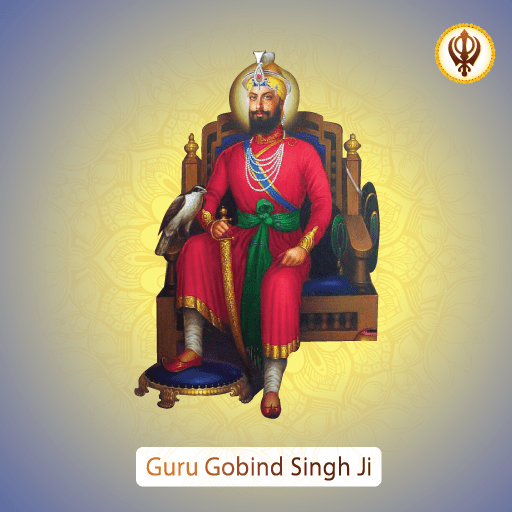History of Ten Sikh Gurus
The Sikh Gurus have had a lasting impact on the world. Today, over 25 million people follow the Sikh faith. This list of 10 Sikh Gurus names in order highlights how they taught equality, social justice, and devotion to God, and their messages still resonate with people everywhere. These teachings have helped shape the spiritual and social lives of communities across the globe.
From Guru Nanak Dev Ji to Guru Gobind Singh Ji, each Guru played a vital role in the Sikh community’s spiritual growth. They also promoted values that went beyond religious lines. Their focus on unity and serving others helped challenge social inequalities, support education, and improve the welfare of everyone.
In this blog, we will explore the teachings, sacrifices, and lasting legacy of the 10 guru of Sikh. We’ll see how their lives and messages still inspire millions today.
What does Guru mean?
The term “Guru” originates from Sanskrit and refers to a mentor, guide, or expert. However, in Sikhism, gurus hold a deeper significance—they are considered divine messengers. The Sanskrit meaning of “Guru” translates to “one who dispels darkness.”
The concept of a guru is believed to have first emerged in Hinduism, with the gurukul system—schools run by gurus—established in India before the 1st millennium BCE.
List of 10 Sikh Gurus Names in Order

Guru Nanak Dev Ji (1st Guru)
Guru Nanak Dev Ji, the founder of Sikhism, laid the foundation for a spiritual path emphasising equality, love, and service to humanity. His central teaching, “Ik Onkar”, meaning “One Creator,” reminds us of the interconnectedness of all life and the unity of God. Guru Nanak Dev Ji’s vision rejected superstition and rituals that divided people, advocating for truth and humility and rejecting social hierarchies. His contributions are monumental, not only in spiritual teachings but in creating a community that prioritizes service to others and the recognition of the divine.

Guru Angad Dev Ji (2nd Guru)
Guru Angad Dev Ji is best known for introducing the Gurmukhi script, which became the medium for preserving and communicating the teachings of Sikhism. This script empowered the Sikh community by giving them the tools to read, write, and understand their sacred texts in their language. Along with promoting literacy, Guru Angad Dev Ji emphasized the importance of physical fitness, encouraging Sikhs to maintain a healthy lifestyle through regular exercise and discipline. His efforts laid the groundwork for a spiritually and physically strong community, showcasing the holistic approach fundamental to Sikhism.

Guru Amar Das Ji (3rd Guru)
Guru Amar Das Ji was a tireless advocate for gender equality, challenging the social norms of his time that marginalized women. He introduced the practice of Langar, a community kitchen that provided free meals to all, regardless of caste, creed, or gender, further promoting equality and social justice. By establishing Langar, Guru Amar Das Ji created a robust social integration and community service tool. His work not only uplifted the oppressed but also strengthened the social framework of the Sikh community, ensuring that everyone had a seat at the table.

Guru Ram Das Ji (4th Guru)
Guru Ram Das Ji’s legacy includes the founding of Amritsar, which became the heart of Sikhism, and initiating the construction of the Harmandir Sahib (Golden Temple), a symbol of spiritual enlightenment and inclusion. His teachings emphasized devotion to God and selfless service to humanity, forming the core principles of Sikh life. Guru Ram Das Ji also instituted the tradition of singing hymns, known as Kirtan, which became an integral part of Sikh worship. His focus on devotion and service shaped the spiritual practices of Sikhs for generations to come, underlining the importance of connecting with the divine through worship and action.

Guru Arjan Dev Ji (5th Guru)
Guru Arjan Dev Ji made two significant contributions that have had a lasting impact on Sikhism: the compilation of the Adi Granth (the Guru Granth Sahib) and the completion of the Golden Temple in Amritsar. By compiling the Adi Granth, Guru Arjan Dev Ji preserved the sacred hymns and teachings of earlier Gurus, setting the foundation for the Guru Granth Sahib to be recognized as the eternal Guru of Sikhs. His martyrdom, caused by his steadfast commitment to Sikh values in the face of persecution, serves as a powerful reminder of the importance of faith, courage, and dedication to one’s principles.

Guru Hargobind Ji (6th Guru)
Guru Hargobind Ji introduced the concept of Miri-Piri, which balances spiritual wisdom (Piri) with temporal authority (Miri), encouraging Sikhs to engage in religious devotion and social responsibility. He also established the Akal Takht, which became a central institution for the Sikh community and symbolized the sovereignty of the Sikh faith. This concept of combining spiritual and temporal power highlighted the importance of being both a saint and a soldier, a philosophy that guided Sikhs in facing challenges and defending their rights. Guru Hargobind Ji’s teachings empowered Sikhs to stand firm in their beliefs while actively engaging with the world.

Guru Har Rai Ji (7th Guru)
Guru Har Rai Ji is remembered for his deep compassion and focus on preserving the environment. He promoted the importance of kindness and care for all living beings, emphasizing the need for a compassionate and responsible approach to life. Guru Har Rai Ji continued to spread the teachings of Sikhism peacefully, advocating for non-violence and humility in every aspect of life. His emphasis on compassion extended to humans and nature, teaching Sikhs the significance of balance and harmony with the environment. His legacy inspires Sikh values of care, kindness, and environmental consciousness.

Guru Har Krishan Ji (8th Guru)
Guru Har Krishan Ji, who became a Guru at a young age, demonstrated extraordinary wisdom and compassion. Known for his service to humanity, he played a pivotal role in alleviating suffering during the smallpox epidemic in Delhi, where he helped heal the afflicted. Despite his young age, his actions showed a profound understanding of selfless service and leadership. Guru Har Krishan Ji’s legacy teaches Sikhs that age does not determine one’s ability to lead with love and compassion, reinforcing the values of service and empathy central to Sikhism.

Guru Tegh Bahadur Ji (9th Guru)
Guru Tegh Bahadur Ji is remembered for his unwavering commitment to protecting religious freedom, even at the cost of his own life. His sacrifice and martyrdom at the hands of the Mughal authorities underscore the Sikh principle of standing up for justice and protecting the rights of others. Guru Tegh Bahadur Ji’s advocacy for courage, resilience, and faith in the face of adversity remains an enduring source of inspiration for Sikhs. His teachings encourage Sikhs to hold steadfast to their beliefs, regardless of their challenges, and always to prioritize protecting human rights and dignity.

Guru Gobind Singh Ji (10th Guru)
Guru Gobind Singh Ji, the 10th Guru name, shaped Sikh identity by founding the Khalsa in 1699, which became the cornerstone of Sikhism. He introduced the Five Ks (Kesh, Kara, Kanga, Kachera, Kirpan), symbolising Sikh identity and discipline. He solidified the Guru Granth Sahib as the eternal Guru for Sikhs. Guru Gobind Singh Ji’s leadership during turbulent times exemplified courage, valor, and a strong sense of purpose. His literary contributions, including the Dasam Granth, reinforced the spiritual and martial ideals of Sikhism, emphasizing that Sikhs must live with honor, integrity, and an unwavering commitment to justice.
